AI Tools for Absolute Beginners: How to Get Started Without Overwhelm

Understanding the Basics of AI Tools
When diving into the world of AI tools, it can feel a bit like stepping into a vast ocean of information, especially if you’re just starting out. But don’t worry! Understanding the basics doesn’t have to be overwhelming. In fact, it can be quite exciting once you break it down into manageable pieces. So, let’s take a leisurely stroll through the essentials of AI tools, shall we?
First off, it’s important to grasp what AI tools actually are. At their core, these are software applications designed to perform tasks that typically require human intelligence. This can range from simple tasks like sorting emails to more complex functions like analyzing data patterns or even generating creative content. The beauty of AI tools lies in their ability to learn from data, which means they can improve over time, making them incredibly powerful allies in various fields.
Now, you might be wondering where to start. A good first step is to familiarize yourself with the different types of AI tools available. For instance, there are tools for natural language processing, which help machines understand and respond to human language. Then, there are machine learning tools that can analyze data and make predictions based on that data. By understanding these categories, you can begin to identify which tools might be most relevant to your needs.
As you explore these tools, it’s also helpful to consider your goals. Are you looking to automate repetitive tasks, enhance your productivity, or perhaps delve into data analysis? Knowing what you want to achieve will guide your exploration and help you choose the right tools without getting lost in the myriad of options. For example, if you’re interested in automating social media posts, you might want to look into AI scheduling tools that can help streamline that process.
Once you have a clearer idea of your goals, the next step is to experiment with some user-friendly AI tools. Many platforms offer free trials or basic versions that allow you to test the waters without any financial commitment. This is a fantastic way to get hands-on experience and see how these tools work in real-time. As you play around with them, don’t hesitate to take notes on what you like and what you find challenging. This reflection will be invaluable as you continue your journey.
Moreover, it’s essential to remember that you’re not alone in this learning process. There are countless online communities, forums, and tutorials dedicated to helping beginners navigate the world of AI. Engaging with these resources can provide you with insights, tips, and even troubleshooting advice from those who have been in your shoes. So, don’t shy away from asking questions or seeking help when you need it.
As you become more comfortable with AI tools, you’ll likely find that your confidence grows. You might even discover new ways to integrate these tools into your daily routine, enhancing not just your productivity but also your creativity. The key is to take it one step at a time, allowing yourself the space to learn and adapt without pressure.
In conclusion, understanding the basics of AI tools is all about breaking things down into bite-sized pieces and approaching them with curiosity. By familiarizing yourself with the types of tools available, setting clear goals, experimenting with user-friendly options, and engaging with the community, you’ll find that the world of AI is not only accessible but also full of potential. So, take a deep breath, dive in, and enjoy the journey ahead!
Step-by-Step Guide to Choosing Your First AI Tool
Diving into the world of AI can feel a bit like standing at the edge of a vast ocean, with waves of information crashing all around you. But don’t worry! Choosing your first AI tool doesn’t have to be overwhelming. In fact, with a few simple steps, you can navigate this exciting landscape with confidence. So, let’s take a leisurely stroll through the process together.
First things first, it’s essential to identify what you want to achieve with AI. Are you looking to automate mundane tasks, analyze data, or perhaps create content? By pinpointing your goals, you’ll have a clearer direction. For instance, if you’re a small business owner wanting to streamline customer service, you might want to explore chatbots. On the other hand, if you’re a content creator, tools that assist with writing or image generation could be more up your alley. Knowing your purpose will help you narrow down your options significantly.
Once you have a goal in mind, the next step is to do a little research. This doesn’t mean you need to dive deep into technical jargon or spend hours reading complex articles. Instead, start with a simple Google search or check out beginner-friendly resources like YouTube tutorials or blogs. Look for reviews and comparisons of different AI tools that align with your objectives. This will give you a sense of what’s available and what might suit your needs best. Remember, the goal here is to gather information without getting bogged down in details.
After you’ve done your homework, it’s time to make a shortlist of potential tools. Aim for three to five options that seem promising. At this stage, it’s helpful to consider factors like ease of use, cost, and customer support. Many AI tools offer free trials or basic versions, so take advantage of these to get a feel for how they work. This hands-on experience can be invaluable in helping you decide which tool resonates with you.
Now that you have your shortlist, it’s time to dive in and start experimenting. Don’t be afraid to play around with the features and functionalities of each tool. This is where the fun begins! As you explore, take note of what you find intuitive and what feels a bit clunky. It’s perfectly normal to feel a bit lost at first, but remember that every expert was once a beginner. Embrace the learning curve, and don’t hesitate to seek help from online communities or forums if you hit a snag.
As you experiment, keep an eye on how each tool aligns with your initial goals. Are you finding it easier to accomplish tasks? Is the tool saving you time or enhancing your creativity? These reflections will guide you in making your final decision. Once you’ve settled on a tool that feels right, take the plunge and commit to using it regularly. Consistency is key when it comes to mastering any new technology.
Finally, don’t forget to celebrate your progress! Whether you’ve automated a tedious task or created something new, acknowledging your achievements will keep you motivated. Remember, the world of AI is vast and ever-evolving, so stay curious and open to learning. With these steps, you’re well on your way to choosing your first AI tool without feeling overwhelmed. Enjoy the journey, and happy exploring!
Simple Projects to Practice Using AI Tools
Diving into the world of AI tools can feel a bit daunting, especially if you’re just starting out. But fear not! There are plenty of simple projects you can tackle that will not only help you get comfortable with these tools but also make the learning process enjoyable. Let’s explore some beginner-friendly projects that will ease you into the fascinating realm of artificial intelligence.
First off, one of the easiest ways to dip your toes into AI is by creating a chatbot. Chatbots are everywhere these days, from customer service on websites to personal assistants on our phones. You can use platforms like Chatbot.com or even simpler tools like ManyChat to build your very own chatbot. Start by defining a specific purpose for your bot—maybe it’s to answer frequently asked questions about a hobby you love or to provide tips on a subject you’re passionate about. As you set up the conversation flow, you’ll get a feel for how AI understands and processes language, which is a fundamental aspect of many AI applications.
Once you’ve got the hang of chatbots, consider moving on to image recognition projects. This might sound complex, but there are user-friendly tools like Google Teachable Machine that allow you to train a model to recognize images with just a few clicks. You can start by uploading pictures of your pets, favorite foods, or even different types of plants. The process is straightforward: you’ll label your images, train the model, and then test it out. This project not only introduces you to the concept of machine learning but also gives you a tangible result that you can show off to friends and family.
Another fun project is to create a simple recommendation system. Think about how Netflix suggests movies or how Spotify curates playlists based on your listening habits. You can replicate this idea on a smaller scale using tools like Google Sheets combined with some basic formulas. Start by listing your favorite movies or songs and then create a system that recommends similar titles based on shared genres or themes. This project will help you understand how AI can analyze data and make predictions, which is a key component of many AI applications.
If you’re feeling a bit more adventurous, why not try your hand at generating art with AI? Platforms like DeepArt or Artbreeder allow you to create unique pieces of artwork by blending different styles or images. You don’t need to be an artist; just upload a few images and watch as the AI transforms them into something entirely new. This project is not only creative but also showcases the incredible capabilities of AI in generating content.
Lastly, consider documenting your journey. Whether you’re building a chatbot, training an image recognition model, or creating art, keep a journal or blog about your experiences. Share what you learned, the challenges you faced, and how you overcame them. This not only reinforces your understanding but also helps others who might be in the same boat as you. Plus, it’s a great way to connect with a community of fellow beginners who are exploring AI tools.
In conclusion, starting with simple projects is a fantastic way to ease into the world of AI without feeling overwhelmed. Each project builds on your skills and knowledge, making the learning process both fun and rewarding. So, grab your laptop, pick a project that excites you, and dive in! You’ll be amazed at what you can create with just a little bit of practice and curiosity.
